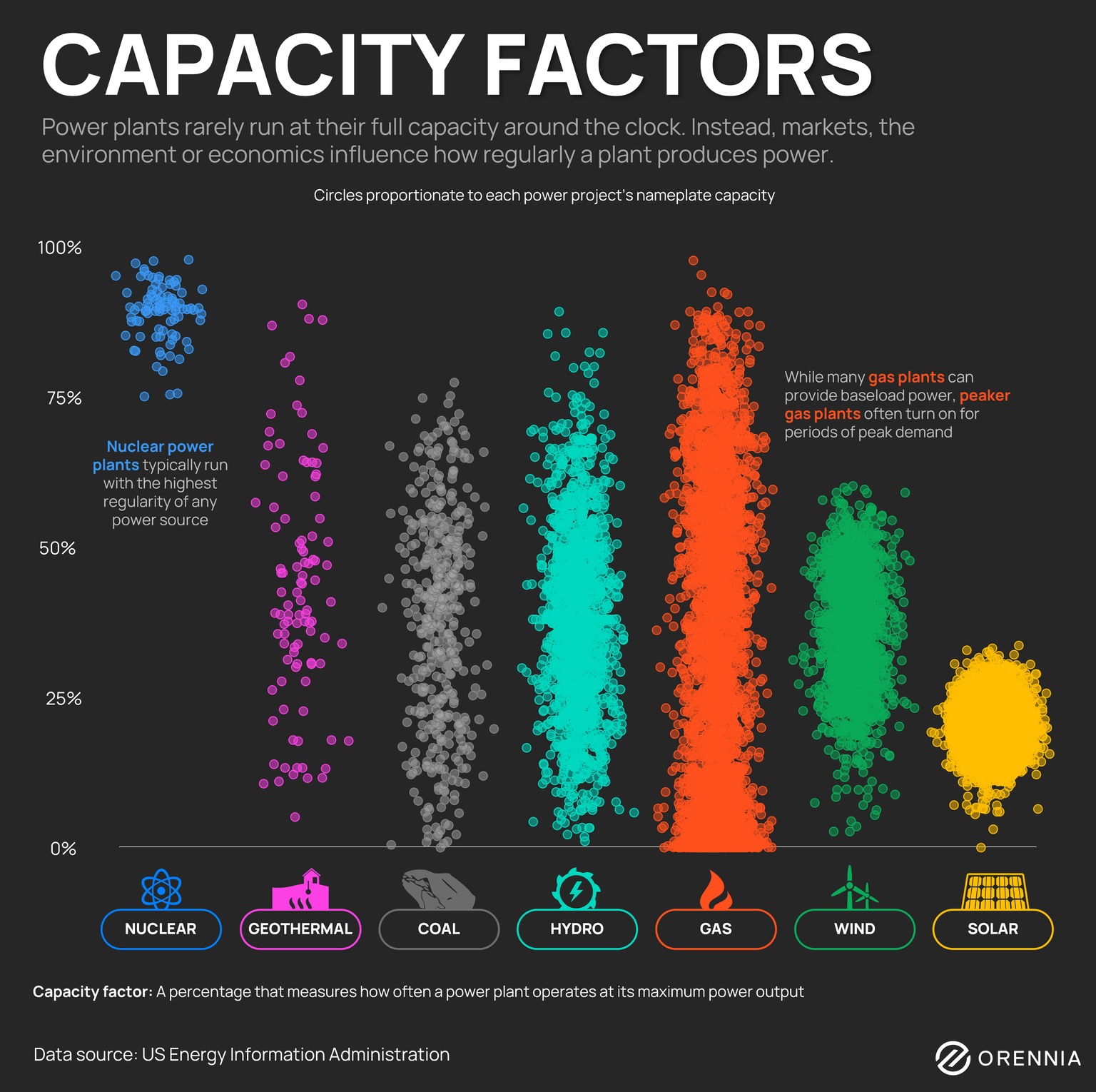
Aaron Foyer
Vice President, Research and Analytics

Aaron Foyer
Vice President, Research and Analytics

Capacity factors are not as black and white as they seem.
Defined as how often a power plant runs at full power, capacity factors (CF) are useful in helping develop and finance projects and to study the impacts to the grid on new projects. But too often, they’re applied in a one-CF-fits-all method to different power sources.
Top performer: Nuclear power plants are some of the most consistent generators around. Often touted for having a CF above 90%, there is good reason why data centers are actively trying to source atomic power for their constant levels of power demands.
The surprising middle ground: While both geothermal (44%) and hydropower (38%) are touted as being baseload, their CFs are often lower than many expect. This can partially be attributed to seasonal rainfall and other environmental factors.
Fossil fuels, reliable but variable: Not all fossil fuel power plants are created equal. Gas-fired plants, particularly with combined-cycle turbines, can provide baseload power, but other plants like peaking plants are used more intermittently.
Wind and solar: Intermittency is often a criticism facing both wind and solar power. Last year in the US, solar projects had an average capacity factor of 20% while wind was closer to 35 %—though each with a large range around them.
Data-driven insights delivered to your inbox.